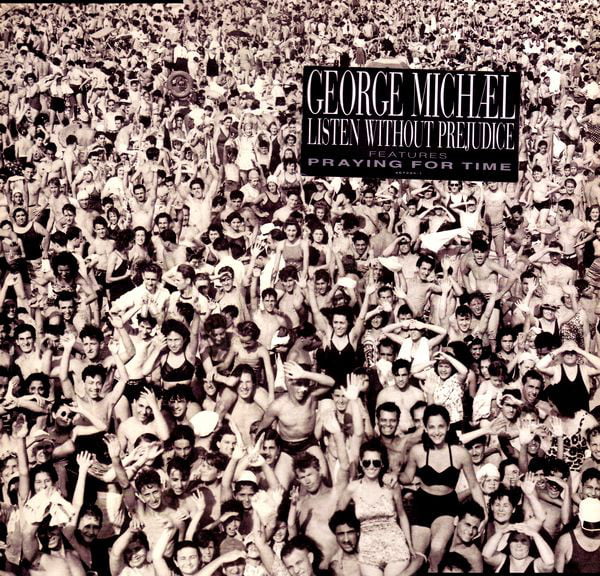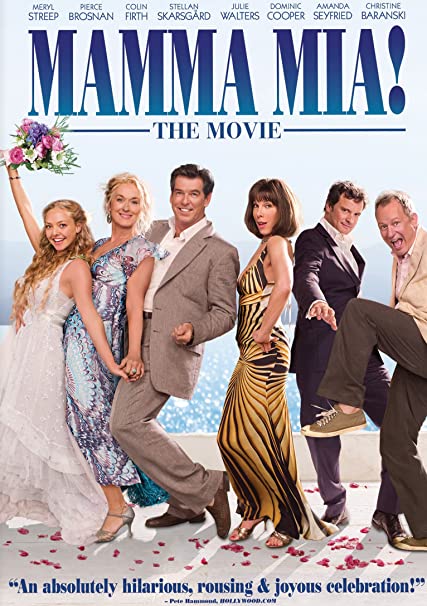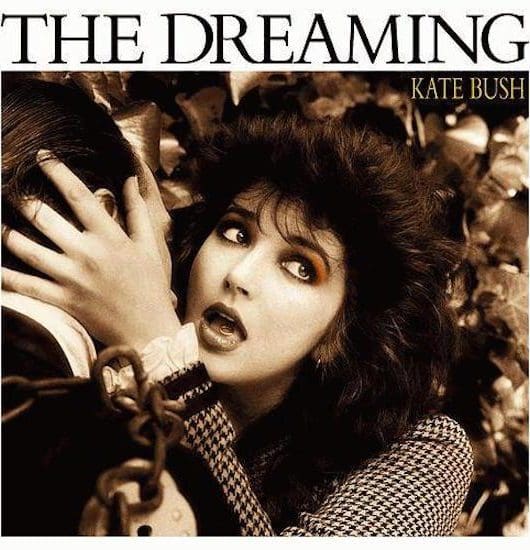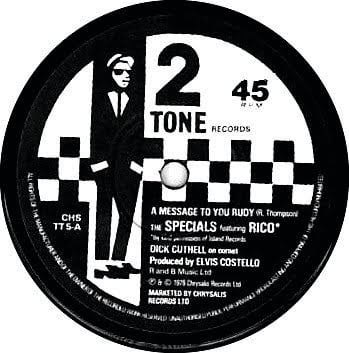Making George Michael: Listen Without Prejudice Vol 1
By Steve Harnell | July 19, 2021
George Michael: Listen Without Prejudice would prove a worthy follow-up to the singer’s debut album, giving him another No.1 LP in the process…

The signs were there, of course, right from the Wham! days. After all, what was Careless Whisper if it wasn’t a plea to be taken seriously away from the bachelor-centric fun of the band mothership?
George Michael: Listen Without Prejudice Vol. 1 – a provocative title that also hinted of further material already in the works – was a concerted attempt by George Michael to free himself of the shackles of pop superstardom. Introspective, at times mournful, mature, this was a powerful and ambitious collection from a serious-minded singer-songwriter at the peak of his powers.
Michael felt under siege – a prisoner of his fame as one of the most recognisable pop icons on the planet, and lambasted as a black music interloper. His two wins at the American Music Awards were controversial and unpopular in some sections of the black music community.
If George felt that his hit-making powers had often brought him nothing but unhappiness and mental anguish, then Listen Without Prejudice Vol. 1 would see him set out an agenda for his own future, defiantly on his own terms. This was a kind of musical digging-in of heels that had rarely, if ever, been pulled off before by an artist of his stature.
Recorded at Sarm West and Metropolis Studios in London, the record – like Faith – would be entirely self-produced by the songwriter.
In the Freedom documentary, George explains: “Suddenly, I couldn’t get anywhere near black radio and that was really the reason why the record was called Listen Without Prejudice. It was me saying ‘here’s an album that has bits of gospel, R&B, some very white stuff. It was just trying to say ‘let me be [all] of these things without having to be one or the other.’”
George’s ever-present soul inspirations can still be heard on the LP, but new influences are also added to the mix, in particular the songcraft of Lennon and McCartney.
For the duration of the writing and recording sessions, The Beatles’ progressive Revolver and the sophisticated studio perfectionism of Abbey Road were constant touchstones.
If fans of Michael had any doubts that he was stretching out into a more adult direction then they vanished with the startlingly mature initial offering from the album, Praying For Time, his first release in almost two years and the opening gambit of the masterwork to follow. Universally admired, it was a remarkably incisive plea for social equality.
James Hunter of Rolling Stone magazine described the song as “a distraught look at the world’s astounding woundedness. Michael offers the healing passage of time as the only balm for physical and emotional hunger, poverty, hypocrisy and hatred.”
Praying For Time was George’s determined effort to write something with the anthemic and philosophical qualities of John Lennon’s Imagine; he pulled it off with aplomb, far exceeding the overly simplistic spirituality of the former Beatle’s most famous solo single.
If George’s record company thought his new direction would be a difficult sell, the conflict between artist and label was further compounded by news that the singer would not appear in any of the videos for his new singles. In the record company’s eyes, this was prima donna stubbornness taken to a whole new level.
For George, it was the only way he could preserve his own sanity after the mentally exhausting promotional merry-go-round that had surrounded the whole Faith campaign.
Read our feature on the making of George Michael’s Faith album
Read more: Wham! – Fantastic
Carefully sequenced, the jolting opener is followed by Freedom! ’90, equally primed to prove a point. With an almost Italo house piano lead line, Freedom! ’90 was packed with some of George’s smartest lyrics as he moved away from his former life as a pop pin-up.
In just one verse he sums up his Wham!, Faith and new eras: “We won the race, got out of the place/ Went back home, got a brand new face for the boys on MTV/ But today the way I play the game has got to change, oh yeah/ Now I’m gonna get myself happy.”
Its video – even without George – still managed to become iconic. Helmed by Fight Club director David Fincher, it featured the world’s five most famous supermodels of the era – Naomi Campbell, Cindy Crawford, Linda Evangelista, Christy Turlington and Tatjana Patitz.
George was unrepentant about choosing to remain absent from the screen, later explaining: “If you’re going to say to your record company ‘Look, I’m not going to appear in this video’, then I would say that’s a fairly good consolation prize. The burning jacket, the exploding guitar, the exploding jukebox… it was me just saying ‘I’m sick of all this, I really can’t cope with it.’”
George’s rapid maturation into one of the most impressive white soul vocalists of his generation is best seen in the virtuoso cover of Stevie Wonder’s mournful gospel ballad They Won’t Go When I Go, which even manages to surpass the original.
Speaking in the Freedom documentary, Wonder was effusive in his praise for it, adding: “At the end of the day, we come alone in this world and we will die alone. It’s what we do in between that’s going to determine how and what we’ll be remembered as, and what we can think about in spirit. It was great to hear [George] sing this song.”
Something To Save, an acoustic string-laden ballad was equally affecting; a plea for a relationship in trouble. At seven minutes plus, the jazzy shuffle of Cowboys And Angels proved that George was unafraid to stretch out in the studio and throw the radio-pleasing conventions of the three-minute pop song in the trash. But Listen… isn’t without its awareness of chart trends.
Waiting For That Day jumped on the Funky Drummer sample bandwagon even if it turned the ebullience of the original rhythm into something more downbeat.
Equally, Mother’s Pride was downcast and maudlin. The track gained significant airplay in the US during the first Gulf War in 1991, with radio stations mixing tributes from callers to their fallen relatives with Michael’s song of families torn apart by military conflict and damned to repeat the process, generation after generation.
Read our feature on the albums of George Michael
If Listen.. can seem like the sound of a tortured artist struggling to find hope in a hopeless universe, then the balm of the Paul McCartney homage Heal The Pain takes some of the weight off the album’s heavy shoulders.
The reggae-tinged Soul Free lets in some sunshine at the tail end of the record, too, only for the tender acoustic ballad Waiting (Reprise) to anchor us to harsh reality once again.
A landmark record in Michael’s back catalogue, after the populist staging post of Faith, his transition to fully-fledged grown-up solo artist was now complete.
George Michael: Listen Without Prejudice – Key tracks
Praying For Time
The stately album opener and lead single is a huge statement of intent from Michael. A deliberate attempt to write a generational anthem to stand shoulder-to-shoulder with John Lennon’s Imagine, this is one of George’s finest compositions. An incisive analysis of our relationship with the idea of charity and social injustice, Praying For Time announced his full-scale reinvention as a mature songwriter who wanted to ditch his pop star past.
Waiting For That Day
Based on the ubiquitous Funky Drummer sample of the early Nineties, this introspective break-up ballad also incorporates elements of The Rolling Stones’ You Can’t Always Get What You Want. With just drums and a strummed acoustic guitar for backing, the stripped-back mid-tempo track puts the emphasis on George’s pained soulful vocals. They didn’t appreciate it in the States – it was the first of George’s singles to miss the Top 10.
Freedom! ’90
A rare upbeat moment on the album as an instantly memorable piano hook kicks off some of George’s wittiest couplets. As with Waiting For That Day, it’s driven by a sample of James Brown’s Funky Drummer. It’s a mission statement for new-era George – wilier, knowing, wry and prepared not to take any nonsense from his record company paymasters. A superb reworked version that included snatches of Soul II Soul’s Back To Life (However Do You Want Me) featured on the B-side.
Heal The Pain
After the Lennon homage of Praying For Time comes this nod to the melodic heart-on-the-sleeve balladry of McCartney. The acoustic-led number makes for a pleasing counterpoint to the stark Mother’s Pride in the album’s closing stages. George eventually went on to re-record Heal The Pain with McCartney in 2005 for his Twenty Five compilation of the following year; it’s also included on the 2017 expanded version of Listen Without Prejudice Vol. 1.
George Michael’s official website
Read more: Adam Ant – Persuasion






